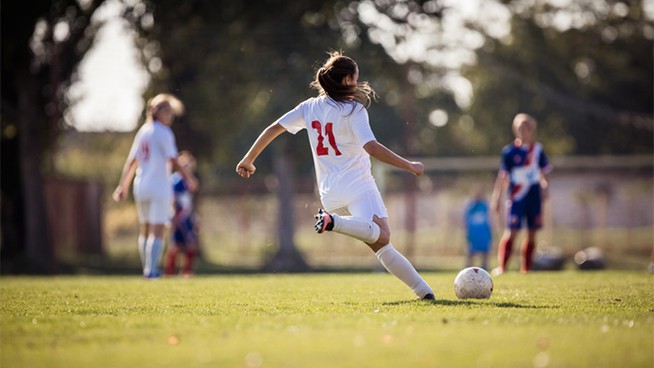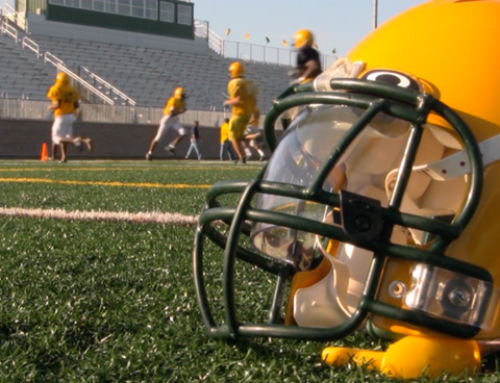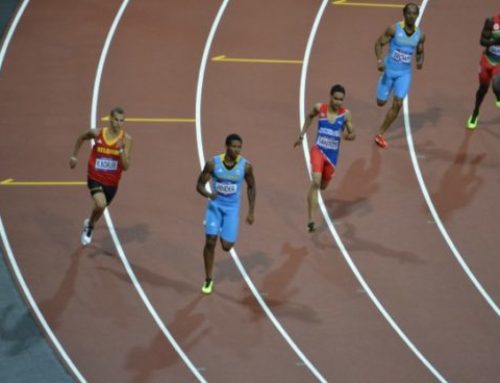Develop Speed With Reactive Agility Drills
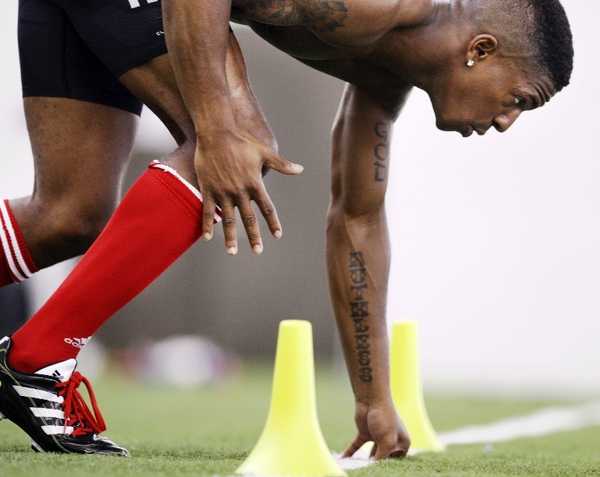
Athletes trying to improve their speed and agility often perform pre-programmed [closed] movements in a stable environment—the distance, pattern and timing all remain the same.
While these types of drills are good for mastering technique, they may not adequately prepare athletes for game situations. Since as an athlete, your environment is always changing, agility drills that require you to respond to stimuli should be incorporated into your comprehensive training program.
The following are examples of ways to progress a closed agility drill into a reactive agility drill using both auditory and visual cues.
Begin by positioning three cones approximately 10 yards apart on two separate lines [see Figure 1 below]. From this six-cone configuration, numerous reactive agility drills can be constructed.
Drill 1: Number Drill
Stand behind cone one. Begin when a partner calls out a specific number. Sprint to the corresponding number in the opposite row of cones and stand behind the cone, chopping your feet in place while waiting for the next directional cue. Do not rest until two to four changes-of-direction occur. The drill should last no more than ten seconds. Initially use a 1:10-20 work-to-rest ratio.
Drill 2: Get Up and Go
Begin by lying on your stomach behind cone one. When partner calls out a specific number, get up and sprint to the corresponding number in the opposite row of cones. Drop down into a Push-Up. Repeat for approximately 8 to 12 seconds with two to four directional cues per set.
Drill 3: Reaction Race
Two athletes start in an athletic position approximately five yards behind the starting line and three feet outside the two rows of cones. A coach or teammate starts the race by calling out a number. The athletes race to the corresponding cone, touch it with one hand, turn and sprint back to the starting line. You can increase difficulty by using three sets of different colored cones and having your teammate randomly call out numbers or colors.
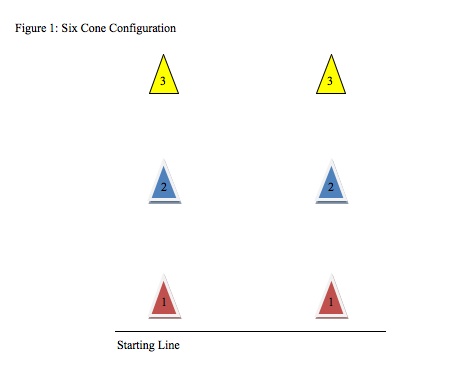
Conclusion
Initially using pre-programmed agility drills benefits athletes who are attempting to learn and perfect specific movement patterns. However, by adding reactive drills like those described above to your strength and conditioning program, you will be better able to apply your skills to new situations. This may help improve certain decision-making and perceptual capabilities that are difficult to learn with drills that are predictable.
Sources:
- Cross, E.S., Schmitt, P.J. and Grafton, S.T. [2007]. Neural Substrates of Contextual Interference During Motor Learning Support a Model of Active Preparation. Journal of Cognitive Neuroscience. 19:1854-1871.
- Schmidt, R.A. and Lee, T.D. [2005]. Motor Control and Learning: A Behavioral Emphasis, 4th ed. Human Kinetics, Champagne, Ill. 91-101, 280-285, 401-431.
- Young, W., Farrow, D. [2006] A Review of Agility: Practical Applications for Strength and Conditioning. Strength and Conditioning Journal. Vol. 28[5], 24-29.
Photo: idahostatesman.com
RECOMMENDED FOR YOU
Develop Speed With Reactive Agility Drills

Athletes trying to improve their speed and agility often perform pre-programmed [closed] movements in a stable environment—the distance, pattern and timing all remain the same.
While these types of drills are good for mastering technique, they may not adequately prepare athletes for game situations. Since as an athlete, your environment is always changing, agility drills that require you to respond to stimuli should be incorporated into your comprehensive training program.
The following are examples of ways to progress a closed agility drill into a reactive agility drill using both auditory and visual cues.
Begin by positioning three cones approximately 10 yards apart on two separate lines [see Figure 1 below]. From this six-cone configuration, numerous reactive agility drills can be constructed.
Drill 1: Number Drill
Stand behind cone one. Begin when a partner calls out a specific number. Sprint to the corresponding number in the opposite row of cones and stand behind the cone, chopping your feet in place while waiting for the next directional cue. Do not rest until two to four changes-of-direction occur. The drill should last no more than ten seconds. Initially use a 1:10-20 work-to-rest ratio.
Drill 2: Get Up and Go
Begin by lying on your stomach behind cone one. When partner calls out a specific number, get up and sprint to the corresponding number in the opposite row of cones. Drop down into a Push-Up. Repeat for approximately 8 to 12 seconds with two to four directional cues per set.
Drill 3: Reaction Race
Two athletes start in an athletic position approximately five yards behind the starting line and three feet outside the two rows of cones. A coach or teammate starts the race by calling out a number. The athletes race to the corresponding cone, touch it with one hand, turn and sprint back to the starting line. You can increase difficulty by using three sets of different colored cones and having your teammate randomly call out numbers or colors.

Conclusion
Initially using pre-programmed agility drills benefits athletes who are attempting to learn and perfect specific movement patterns. However, by adding reactive drills like those described above to your strength and conditioning program, you will be better able to apply your skills to new situations. This may help improve certain decision-making and perceptual capabilities that are difficult to learn with drills that are predictable.
Sources:
- Cross, E.S., Schmitt, P.J. and Grafton, S.T. [2007]. Neural Substrates of Contextual Interference During Motor Learning Support a Model of Active Preparation. Journal of Cognitive Neuroscience. 19:1854-1871.
- Schmidt, R.A. and Lee, T.D. [2005]. Motor Control and Learning: A Behavioral Emphasis, 4th ed. Human Kinetics, Champagne, Ill. 91-101, 280-285, 401-431.
- Young, W., Farrow, D. [2006] A Review of Agility: Practical Applications for Strength and Conditioning. Strength and Conditioning Journal. Vol. 28[5], 24-29.
Photo: idahostatesman.com


